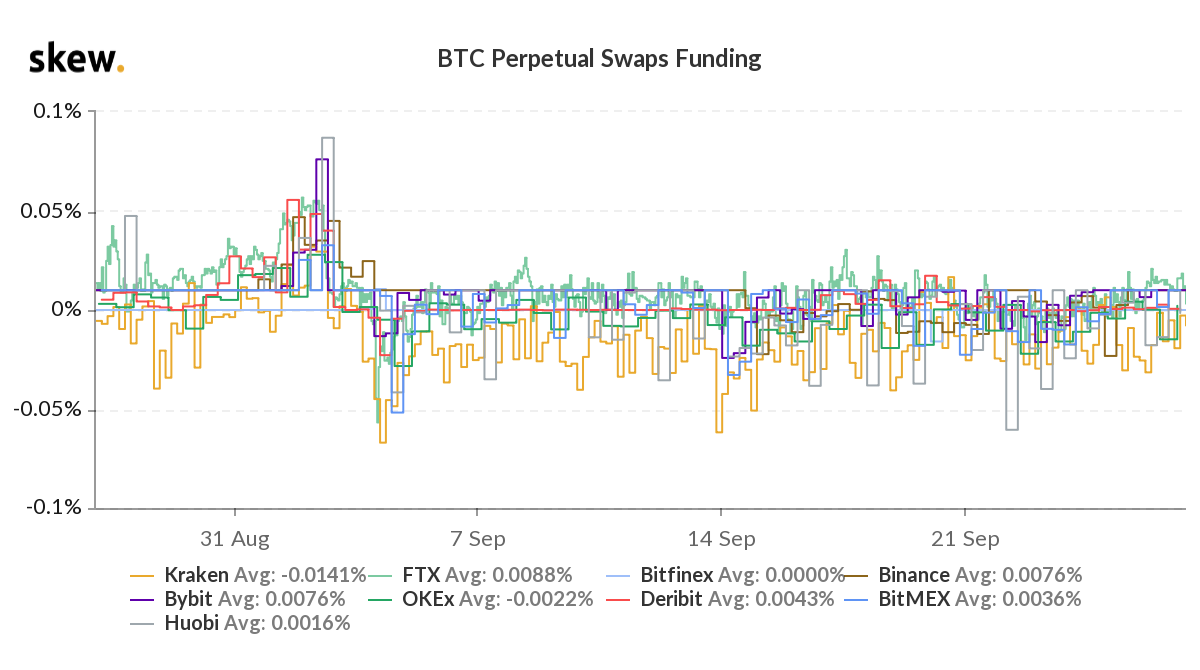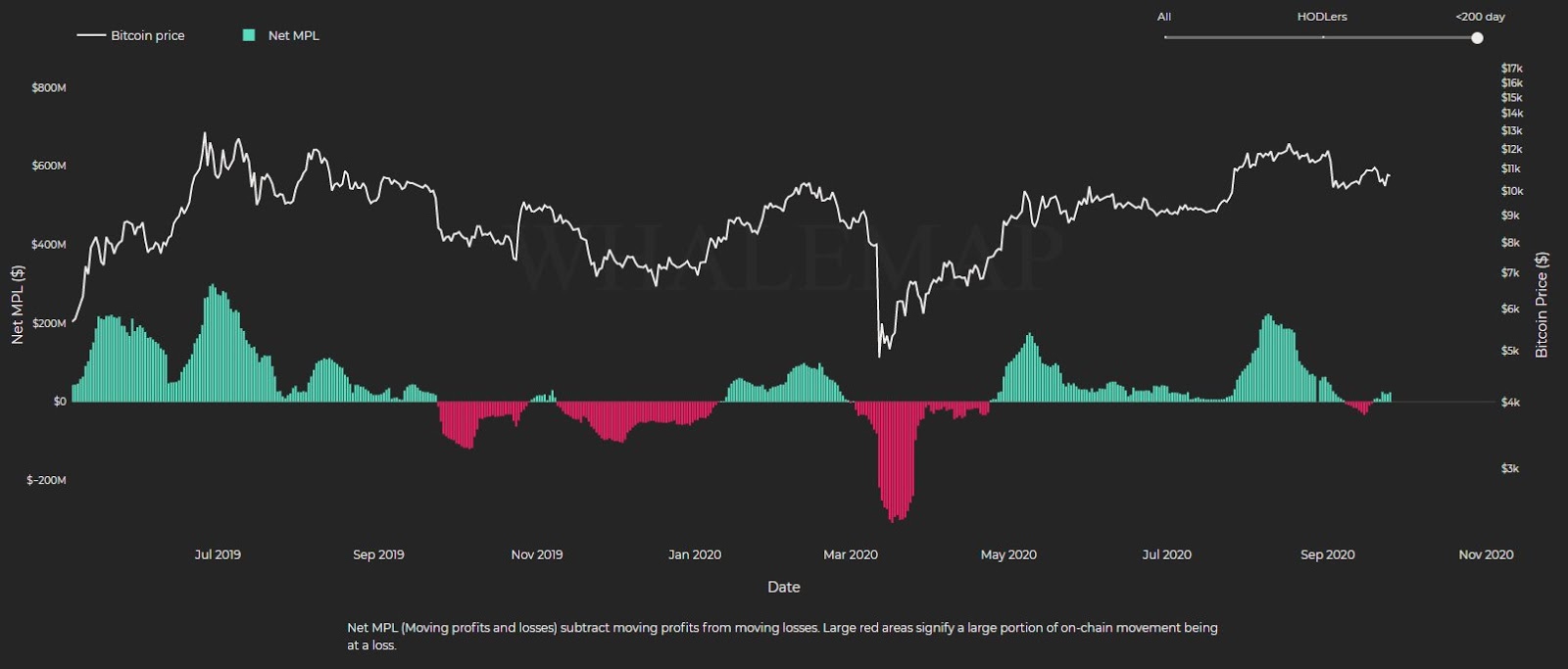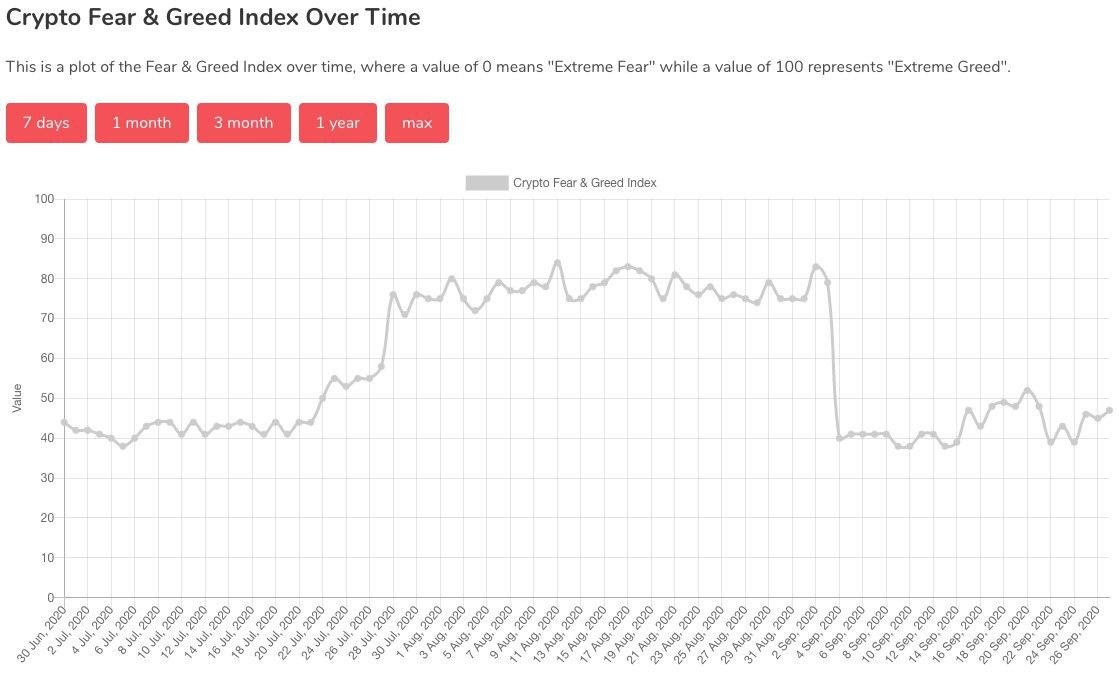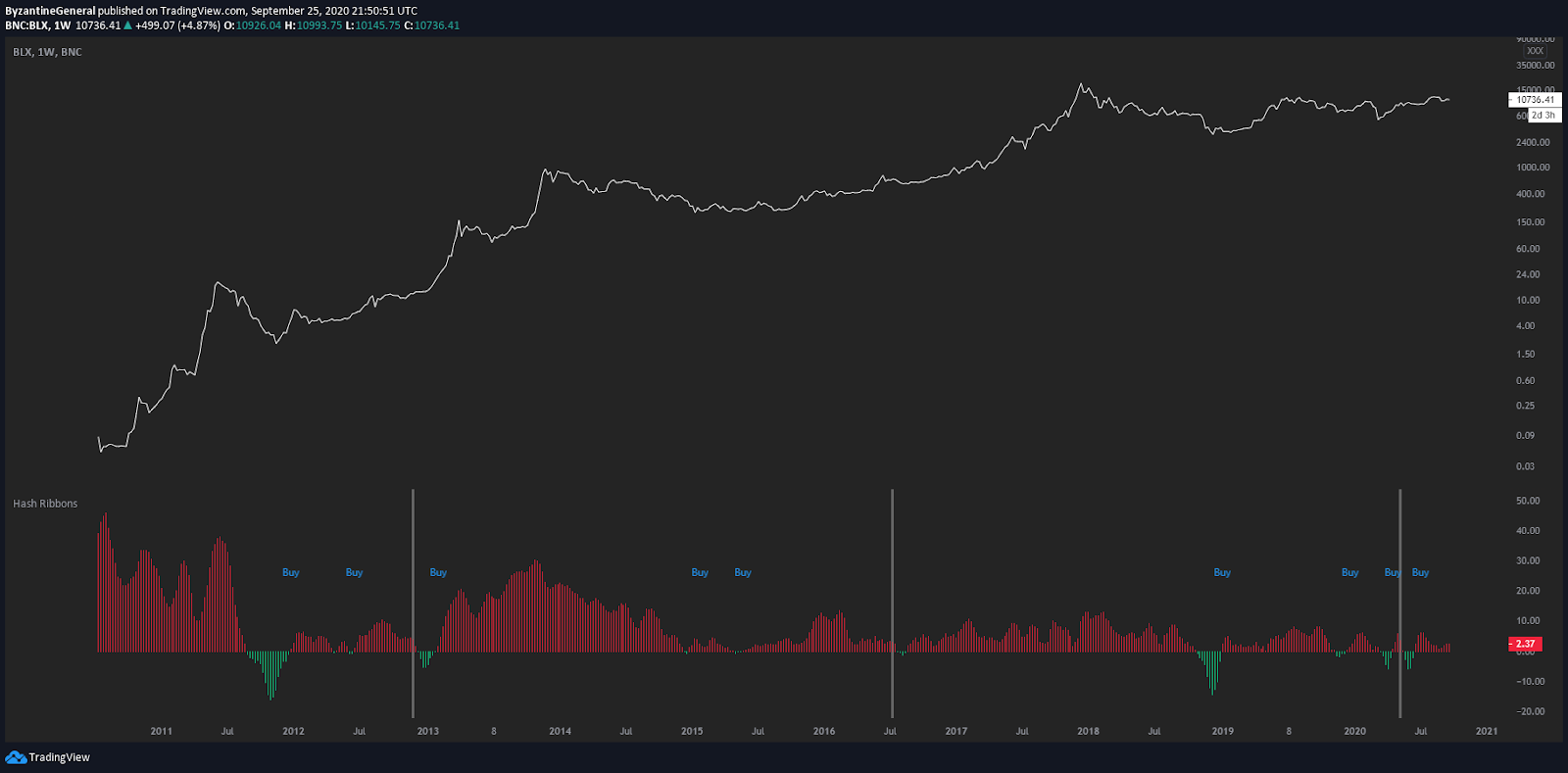A pseudonymous Bitcoin (BTC) trader outlined 23 key technical and fundamental factors that could buoy BTC’s medium-term bull case.
The data points shared by the trader, known as “Byzantine General,” fit into four major themes. They are a less overheated market, a neutralizing futures market, less leveraged traders and strengthening fundamentals.
The Bitcoin futures market is neutralizing
Since Bitcoin’s recovery from $10,300, a persistent narrative around the top cryptocurrency has been its negative funding rates.
The Bitcoin futures market implements a mechanism called “funding” to prevent the market from dominantly swaying to one side. As such, when the market is majority bullish, investors betting on BTC surging compensate short-sellers, and vice versa.
Throughout the past week, the funding rate of Bitcoin has either stayed negative or neutral despite its declining price. That meant short-sellers were continuing to bet against BTC but there were not enough long contracts to squeeze.

The funding rates of Bitcoin. Source: Skew.com
The low probability of a long squeeze eventually led the market sentiment to change. Shorting Bitcoin quickly became an overcrowded trade, causing a short squeeze to occur.
The trader emphasized that the consistently negative or baseline funding rate is a positive factor for BTC. He explained:
“First of all, there is funding. One of the best indicators to gauge market sentiment. After the drop from 12k it has been consistently negative or baseline at best. Secondly, we have the contango index. This shows the difference between the price of SPOT exchanges & derivatives exchanges. When SPOT has higher prices the indicator goes lower, into the green zone. A consistent premium for SPOT exchanges is considered bullish.”
For swing traders like Byzantine General, who focus on longer-term trades over short-term, changing market sentiment is critical.
The cryptocurrency market is less leveraged
Bitcoin initially rejected the $12,000 to $12,500 resistance range on Aug. 17, then again on Sep. 2.
The two consecutive rejections of Bitcoin at a crucial resistance area were brutal for futures traders. In the next two weeks that followed, the open interest of futures exchanges rapidly declined.
The term open interest refers to the total sum of active long and short contracts in the futures market. In short, it shows the dollar sum of bets on BTC price movements.
The sharp drop in futures open interest meant fewer individuals have been trading BTC with additional leverage. Major futures exchanges in the cryptocurrency market support up to 125x leverage. Typically, the high leverage opens up the possibility of massive price swings.
The trader explained that lower open interest implies that there are now fewer leveraged positions in the market. For the medium-term trend of BTC, he argued it is optimistic. He said:
“Is the market over-leveraged? The 12k range was absolutely brutal. We had multiple days of more than half a billion in liquidations. About a billion of OI got wiped out since the peak in the 12k range.”
Key on-chain indicators show the market is no longer overheated
On-chain indicators could be useful in gauging the sentiment around the Bitcoin market by analyzing address activity and profits.

Bitcoin net MPL indicator. Source: Byzantine General
According to the net MPL indicator the trader cited, the Bitcoin market is less overheated than before. Similar to previous bull cycles, the trader said it gave the cryptocurrency market a reset. He noted:
“The net MPL indicator. This shows that the market isn’t overheated anymore. We recently had a reset. Red zones are great buy zones. When we look at the previous bull-run in 2017 we can see that those small resets are turning points where momentum picks up again.”
The crypto fear and greed index also shows that the market sentiment has become neutral after BTC’s recent recovery (higher values indicate the market is overheated).

Crypto fear & greed index. Source: alternative.me
Fundamentals are strengthening
At its core, Bitcoin is a decentralized blockchain network that is maintained by computing power contributed by miners. As such, hashrate is often considered an important metric to gauge the fundamental strength of the blockchain.

Hash ribbon indicator on top of BTC price chart. Source: TradingView.com
The hash ribbon indicator emerges when miners go through a capitulation phase where they sell significant amounts of Bitcoin. Although the sell-off initially places selling pressure on BTC, afterward, BTC tends to recover. The trader said:
“Let’s take a look at some fundamentals. Hash ribbons recently gave 2 consecutive buy signals. These signals happen during the first recovery after miner capitulation. The bitcoin production cost is currently green. Simply put, this means that miners are potentially taking losses. Maybe it’s not very intuitive, but historically speaking these are amazing buy opportunities.”
The confluence of strengthening fundamentals and technical factors suggests a less-overheated market and raises the probability of more upside.